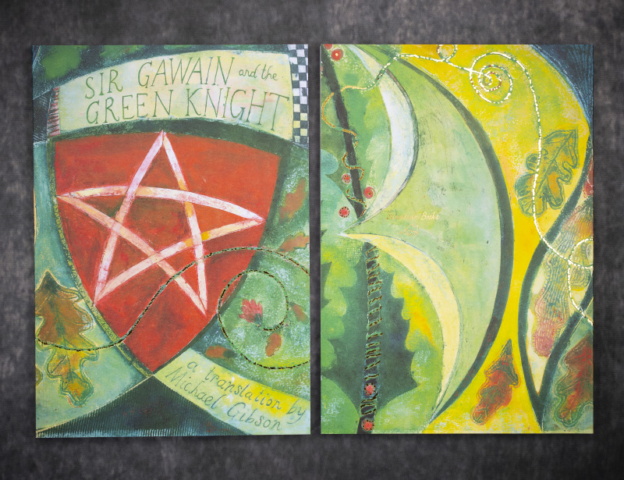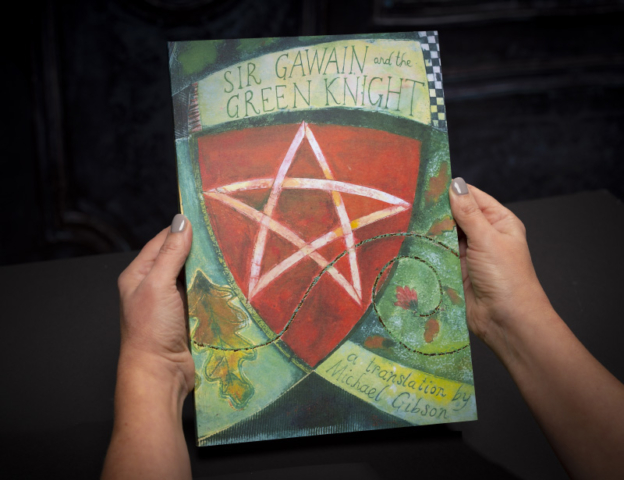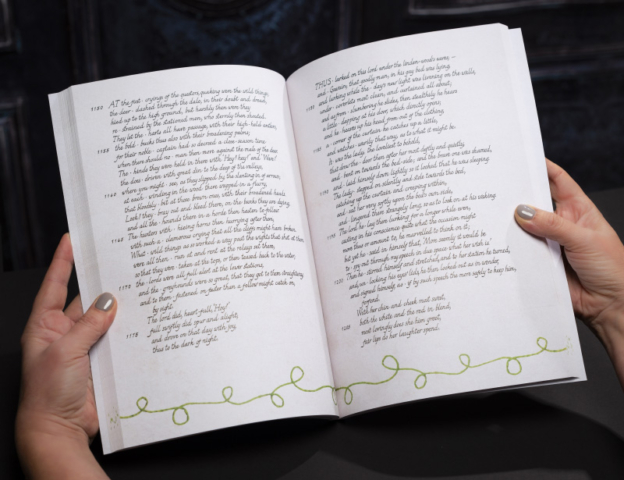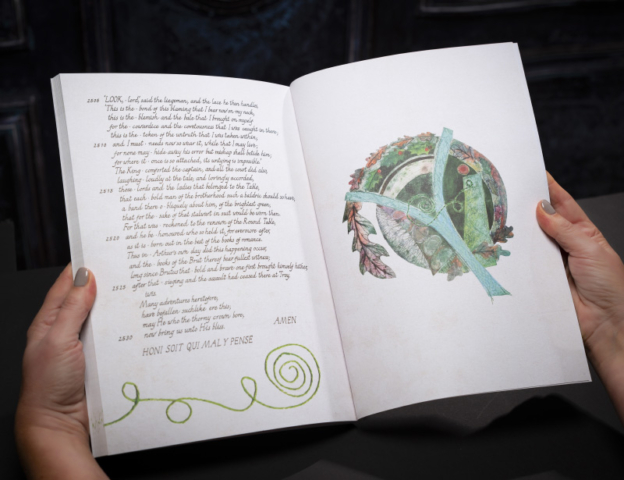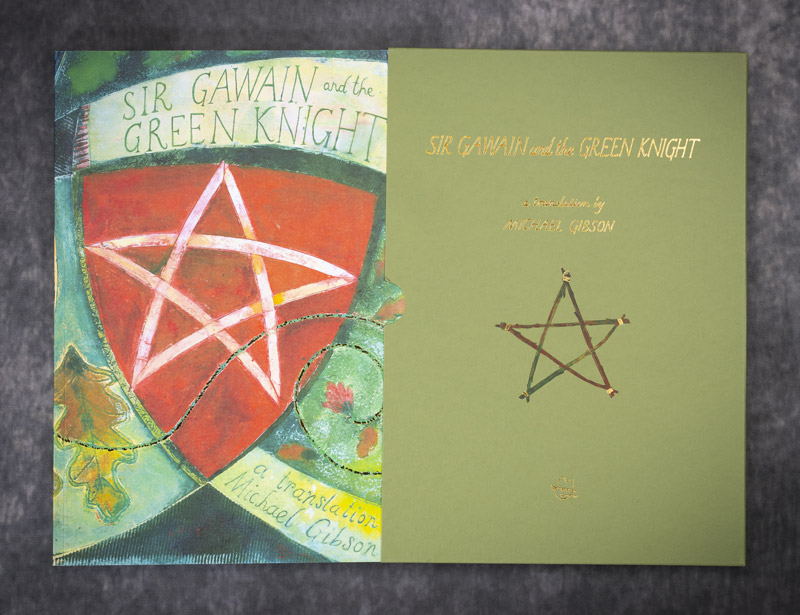
In his handwritten book
Sir Gawain and the Green Knight
A Translation
Michael Gibson has achieved what he thinks may be the ‘closest’ version yet of this fourteenth century masterpiece.
*
That ‘close’ verse Translation of Sir Gawain and the Green Knight was begun in 2006. It is at last being published – with lovely and intriguing illustrations by Joanna Allen. There is gold foiling on the book’s cover; and it is handwritten in accord with the one manuscript of the poem that we have, which is in the British Library (and which is itself a copy of a lost exemplar).
In the process of making this Translation, as little ‘modernisation’ as possible has been done. The ‘character’, diction and structure of the original text has been imitated. That is, Michael has followed as closely as he might, in every verse line, the rhythmic pattern of the beats in their alliterative (or rhyming) arrangements; the vocabulary and literal meaning of the verses; and the amount of ‘syllabic and sonic material’ that each holds. (There is a video on his website regarding his approach to these matters.)
As plans to publish the Translation became firmer, the need presented itself to give a ‘personal’ account of what this story called Sir Gawain and the Green Knight might ‘mean’. Over the last hundred and fifty years or so, the poem has had close critical examination. It can be a perplexing piece. In particular, the ending of the story troubles many people. Michael examined the tale more thoroughly than he had hitherto. He read it as a ‘romance’ emerging from the ‘fund’ of such story telling going back centuries; and he also considered it as ‘an immediate and realistic narrative’. This led to his making what he calls “transformative discoveries” regarding the nature of the story.
The ‘judgement’ that ‘the Green Knight’ delivers on the conduct of ‘Gawain’ in the various ‘tests’ on which he enters has always seemed to Michael to be inadequate. He now finds that ‘Gawain’ shows weaknesses of character and makes errors in conduct not generally noticed and assessed by ‘critics’ of the poem. And he says that ‘the Green Knight’ does not adequately address these faults either.
In the story ‘Gawain’ is, then, much of a ‘cheat’. And so is ‘the Green Knight’. This is what leads to the finding that the author of the story is himself “a trickster and a cheat”. But this is said in awed respect: Michael holds that this masterful maker is ‘playing an extraordinary game’ – a “gomen” in the language of the poem – so as to set up a ‘puzzle’ for his listeners or readers. And he further holds that this puzzle is to be ‘solved’ by our making up some other story within the ‘framework’ of the given one.
These findings are being extended, explained and consolidated in a book now being handwritten also and that is to be called
gomen
*
When the “transformative” elements in the story of Sir Gawain and the Green Knight first showed themselves to him, Michael prepared an account of some of them that he was able to present at The International Medieval Congress at Leeds University in July 2022 in an address titled
As an Ermine in Snow
The story of that visit, and a reworking of the substance of As an Ermine in Snow, form the First Part of the second book
Truth, Dare, Kiss…Cheat!
Buy now: £60
+ £5 p&p to the UK
+ £10 p&p to the rest of the world

